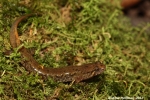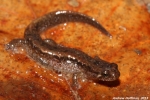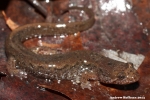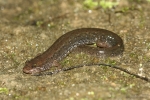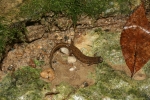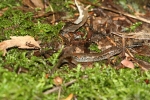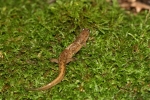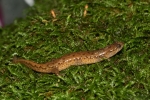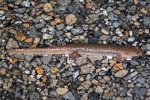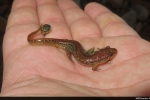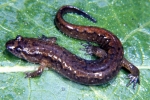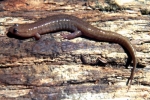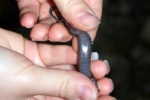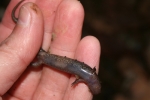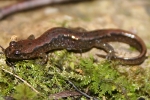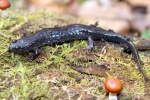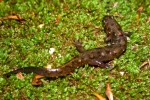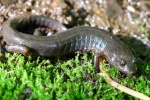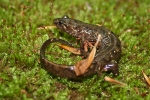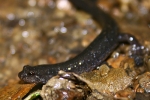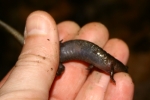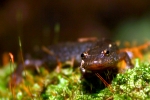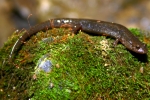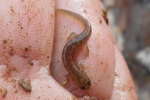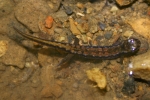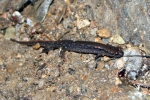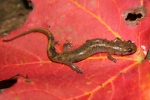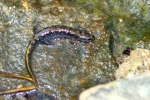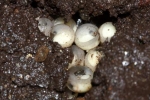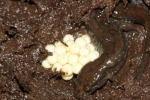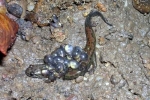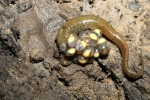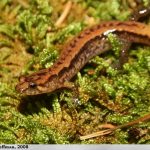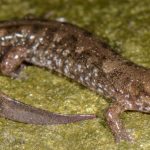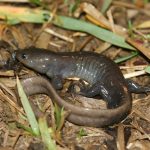Northern Dusky Salamander
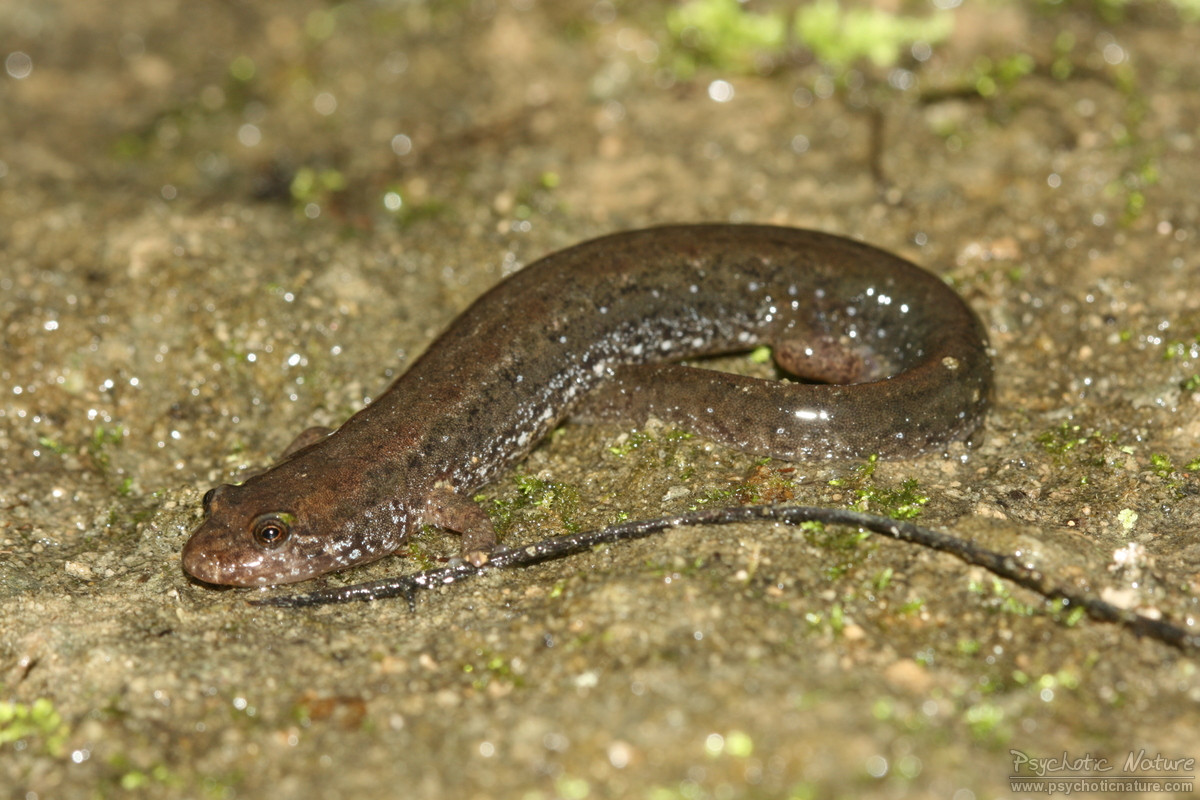
Scientific Name: Desmognathus fuscus fuscus
Size: 2.5-5 inches (6.5-13 cm) in length
Status: Abundant
Habitat:
Found near or in streams, seepage areas, and springs. may be found under logs, rocks and other cover.
Description:
Small to medium-sized species; semi-aquatic species. The background color is highly variable and can range from yellowish to grayish brown or dark brown with a broad light brown dorsal stripe that contains variable dark markings; it is also bordered by dark gray or brown light to heavy mottling. The dorsal stripe extends to the anterior portion of the tail. The sides of the body are mottled. The underside is light cream with light to heavy mottling. The tail is laterally compressed with a distinct dorsal keel and somewhat triangular in the cross-section. Older individuals may have and obscure dorsal strips and pattern and become uniform greyish brown in color. Adults may also have no dorsal pattern and be uniform yellow to greyish brown.
Desmognathus genus are easily identified by the light line that extends from the eye to the angle of the jaw.
- The dorsal background color is highly variable and can range from yellowish to greyish brown or dark brown with a broad light brown dorsal stripe that contains variable dark markings; it is also bordered by dark grey or brown light to heavy mottling. The dorsal stripe extends to the anterior portion of the tail.
- The sides of the body are mottled.
- The ventral is light cream with light to heavy mottling.
- Older individuals may have and obscure dorsal strips and pattern and become uniform greyish brown in color.
- Adults may also have no dorsal pattern and be uniform yellow to greyish brown.
- Duskys are easily identified by the light line that extends from the eye to the angel of the jaw.
- Small to medium-sized species; semi-aquatic
- Well-proportioned species
- The limbs are well-developed
- The tail is laterally compressed with a distinct dorsal keel and somewhat triangular in the cross-section.
- The toe tips lack cornifications.
- 14 costal grooves.
- The dorsal is vividly patterned with 5 to 8 pairs of alternating yellow spots that are connected by a wavy dark band that continues on to the dorsal of the tail.
- The sides typically have a dark dorsolateral stripe that is either wavy or straight or the dorsum may be uniformed in color or blotched with brown to reddish brown.
- The body is rounded
- The limbs are well-developed.
- the tail is laterally compressed.
- A caudal fin is present.
- The head is large and distinct from the body.


References:
- Hulse, C. and McCoy C. J. and Ellen Censky ,1998. Amphibians and Reptiles of Pennsylvania and the Northeast. 75-78pp.
- Petranka, James W. ,1998. Salamanders of the United States and Canada. 173-181pp.
- Jason Poston
- Billy Brown
- Jeff Hankey
- Tom Diez
- Doug Warner
- Matthew Jennette
- Brandon Hunsberger
- Kyle Fawcett
- Don Becker (psychoticnature.com)
Heads up!
Please contribute your observation of this and other herps to the Pennsylvania Amphibian and Reptile Survey. Your help is needed.
